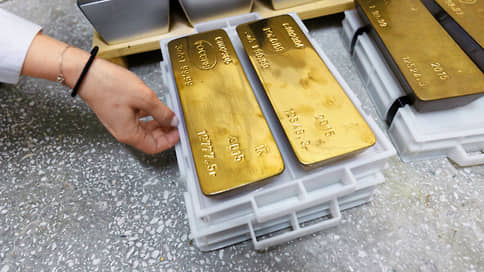Sberbank began placing the second issue of DFAs linked to the price of gold
[ad_1]

Sberbank has begun placing the second issue of digital financial assets (DFAs) linked to the price of gold. Experts note that investors’ opportunities are expanding, but the issuer sets its own pricing, which “may not always be fair and objective.” In general, according to analysts, the digital financial investment segment is currently receiving a new impetus for development, since it is weakly dependent on the movement of interest rates and the sanctions agenda, and therefore can serve as an alternative form of financial investment.
Sberbank will again issue DFAs linked to the price of gold: by 150 kg and about 900 million rubles. Such placements, especially for large amounts, are rare in the current DFA market. The peculiarity of the current issue is that it can only be sold to legal entities, has a long term (five years, until 2028), the conditions include the possibility of redemption at the request of investors, but there is no secondary market.
Currently, the register of information system (IS) operators that can issue DFAs includes ten organizations. By the end of July 2023, five IS operators had carried out more than 80 DFA issues totaling approximately RUB 20 billion.
Investors could purchase the first “gold” issue of Sberbank DFA from December 9, 2022 to June 30, 2023. The conditions differ only in the terms of possible acquisition by investors and unilateral redemption of DFAs at the initiative of the issuer.
In fact, the new issue is an expansion of the window of opportunity for investors, since acquisition is now possible until July 30, 2024, explains Anastasia Puzanova, project manager of the corporate finance department at Tsifra Broker.
DFAs tied to gold act as “a unique form of diversification of Sberbank’s funding base,” says independent financial analyst Andrey Barkhota. According to him, previously the tools for diversifying the resource base were largely limited and DFA looks “interesting from the position of supplementing archaic accounts and deposits.” Sberbank has historically been distinguished by a fairly low cost of funding, which was explained by the high share of current accounts and the low yield of time deposits, clarifies Anna Avakimyan, chief analyst of Regblok.
In this case, the pricing of the asset value itself is also interesting, since this quote is set by the issuer, which “cannot always be fair and objective,” emphasizes Maria Telegina, an expert at the Moscow Digital School educational platform. In her opinion, this is why the offer is limited to Russian legal entities – to avoid possible losses for citizens.
Individuals would consider the purchase of such DFAs as savings, which are more profitable than time deposits and comparable to purchasing shares of Sberbank itself, Mr. Barhota believes. Buyers—legal entities, according to him, see the instrument more as an investment, and in some cases a hedging mechanism, since the assets are tied to gold.
It is important to consider that the name “DFA for gold” does not imply the right to receive precious metals upon redemption of an asset – it represents a monetary claim, clarifies Lidings advisor Dmitry Kirillov.
The DFA market in Russia is just beginning to develop, it is still going through its first stages – practice will show how effective the tool is and how accessible it is to the market, notes Ms. Puzanova. The incentive, in her opinion, would be “the emergence of an infrastructure that will connect all DFA operators together and allow the creation of a large consolidated primary and secondary market.” Currently, only Moscow Exchange is included in the register of exchange operators that allow the exchange of DFAs between systems. “The awareness of investors (both individuals and legal entities) about such a market will also make a contribution,” adds Ms. Puzanova.
This segment of investment is receiving additional impetus, since it is weakly dependent on movements in interest rates and the sanctions agenda, and therefore can serve as an alternative form of financial investment, Mr. Barhota points out.
The factor restraining the development of the market is the issue of its legislative regulation, Ms. Puzanova believes, “but, given the latest statements by parliamentarians, lifting this restriction is a matter of time and dialogue with market participants.”
[ad_2]
Source link





